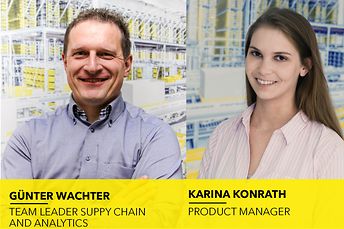Labor and Resource Management - warehouse personnel
New and increasingly demanding market requirements mean that companies are facing increasing pressure to improve their performance. This pressure also causes extra challenges for intralogistics, such as constantly growing quantities of goods that need to be handled during warehouse operations or additional tasks that need to be carried out in the warehouse, as well as short delivery times.
The efficient planning and monitoring of all the processes in the warehouse is becoming increasingly essential as the efficient use and provision of resources is a key factor in ensuring success. In order to guarantee the cost-effectiveness of warehouse operations, the quality and implementation of these activities must therefore be measured.
Another key factor is that manual work in the warehouse is rather cost-intensive. High costs tend to lead to more automation. Therefore, the tasks that still have to be carried out manually require the best possible planning and monitoring. All of this means that labor organization has become an important aspect of warehouse management. A Labor and Resource Management system can help give warehouse operators a significant advantage over the competition.
How does Labor and Resource Management work?
The WAMAS LRM (short for "Labor and Resource Management") developed by SSI SCHAEFER records the performance of the warehouse staff. Both activities that add value as well as those that do not are included. In order to record performance, warehouse processes are divided up into time modules. In order to do this, the LRM warehouse model calculates routes and the resulting transit times and time spent lifting, subsequently converting these into time modules based on the transport device used. Performance is then calculated by comparing the expected times with the actual times. The LRM system can be integrated into the WAMAS WMS warehouse management system and records all of the tasks carried out in WAMAS itself. It can also be used as a standalone solution, for which external interfaces are available.
What are the benefits of LRM?
The functionalities of Labor and Resource Management complement the comprehensive logistics software WAMAS® for a maximum of transparency regarding information in the warehouse. As from a bird’s eye view, an overall image helps to understand processes holistically. Individual dashboards and time-controlled reports can be created to ensure comprehensive process transparency and performance can be displayed in real time. The observation over reference periods of time provides further information regarding performance and times of lower utilization. These features help the operator to identify where there are gaps in the processes and where training is required.
About the authors

Guenter Wachter is an experienced IT product and project manager. For over 18 years he has been defining product solutions for the areas intralogistics and transport and freight cost management, which he also implemented in projects with strategic customers.
Within SSI SCHAEFER IT Solutions GmbH, Guenter Wachter is in charge of new solutions in the areas extended WMS and supply chain solutions and drives the development of new solutions towards supply chain execution and analytics considerably.
Karina Konrath studied technical mathematics at Graz University of Technology and has been working for SSI SCHAEFER since 2017. As a data scientist she is in charge of analysis and preparation of data as well as for the creation of mathematical optimization concepts in order to achieve process improvements within the warehouse. She is working closely together with the simulation team and in collaboration they evaluate new approaches, AI models and optimizations.